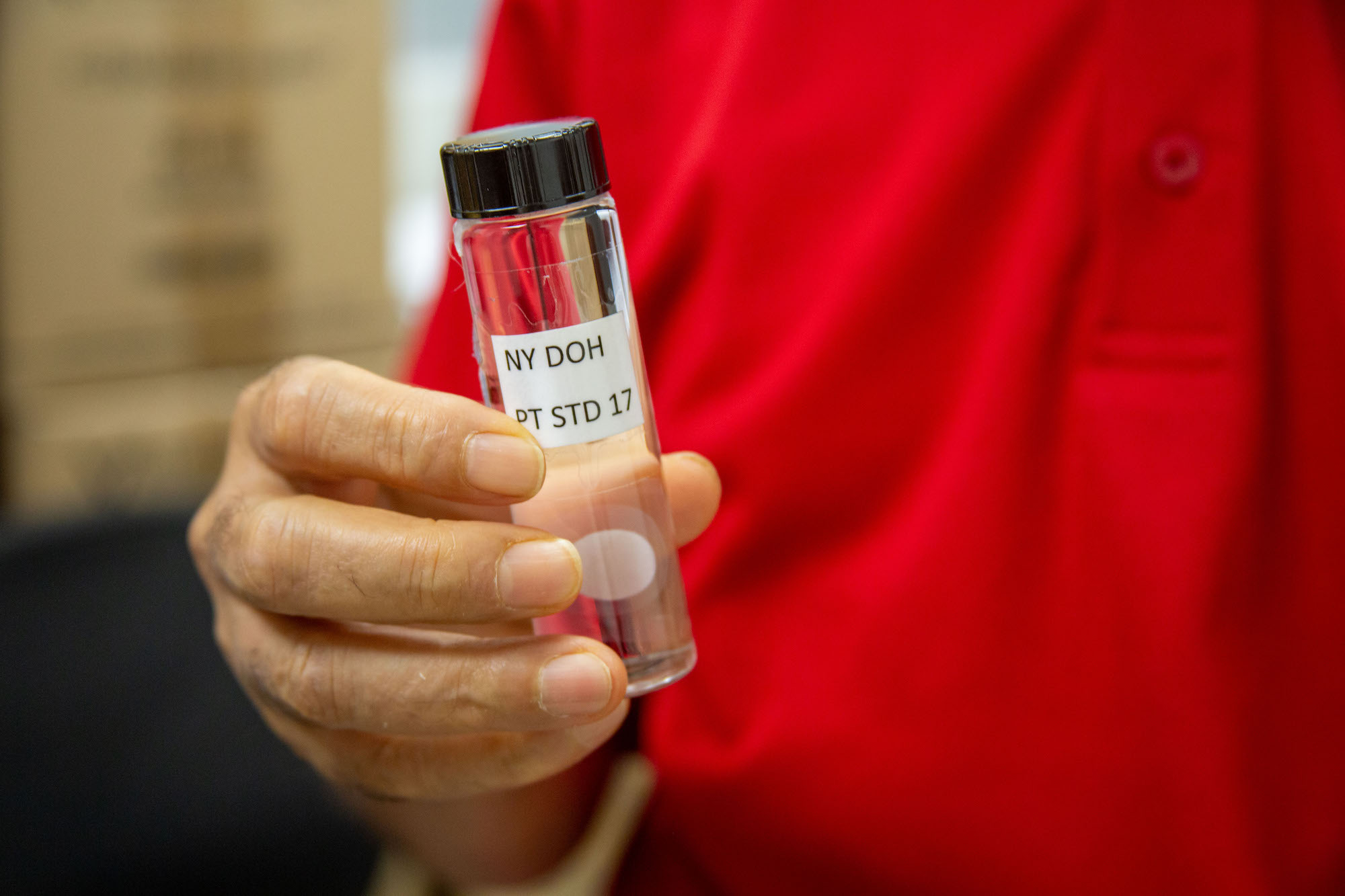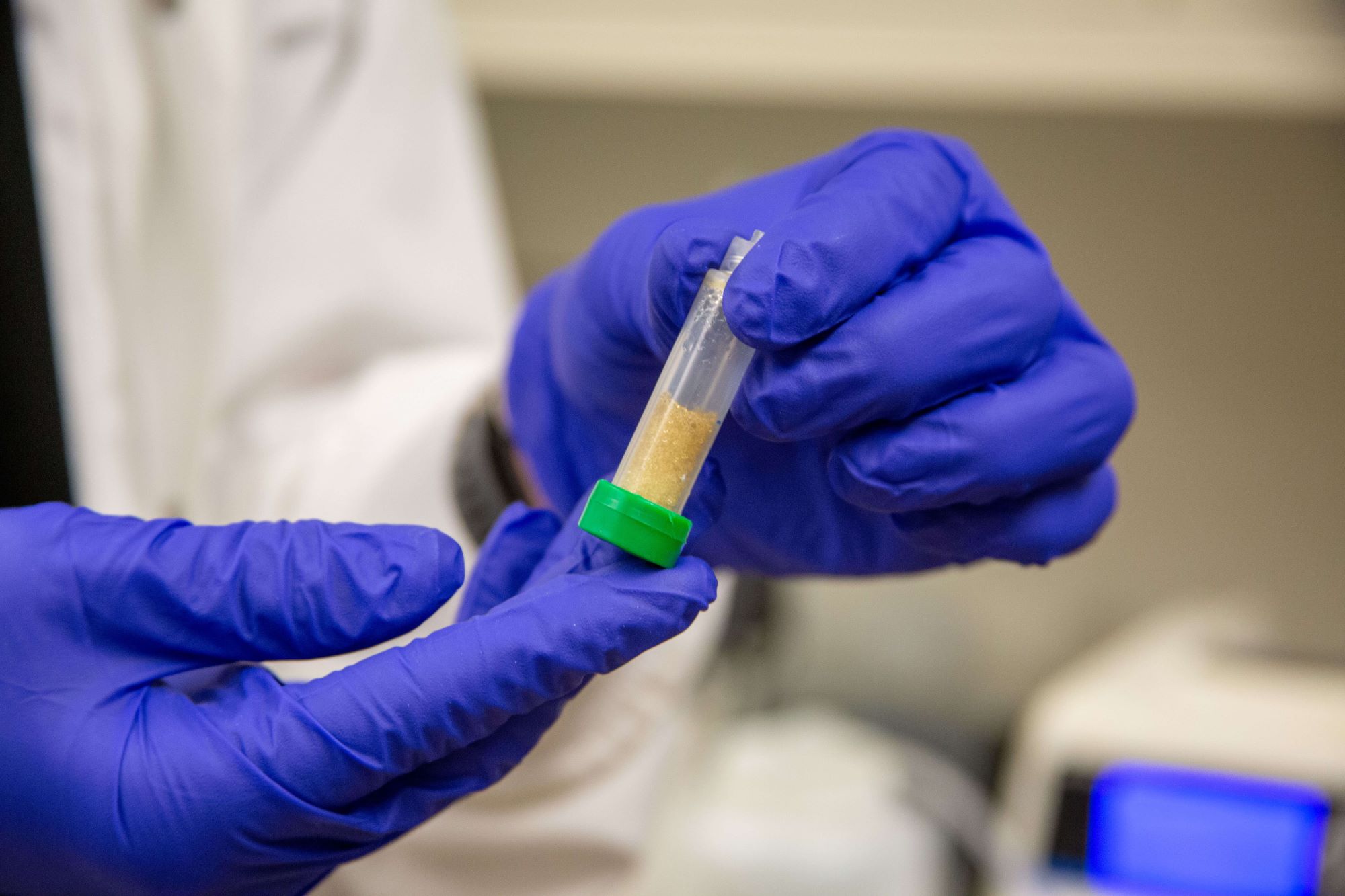.png)
What is colorless, odorless and tasteless, responsible for 21,000 cancer deaths in the U.S. each year, and found throughout the world? Here's a hint: it’s a gas that can be found on the periodic table.
The answer is radon.
The naturally occurring radioactive gas is released from rocks — such as granite — but is also released from soil and can seep into homes and buildings through small cracks or holes and build up in the indoor air we breathe. It also gets dissolved in underground water and enters homes through wells, especially private wells used for household water supplies.
Over time, breathing in high levels of radon can cause lung cancer, but it may take years before health problems appear. The U.S. Environmental Protection Agency states that radon is the leading environmental cause of cancer and is the second-leading cause of lung cancer, after smoking.
Derek Cooper, a radon educator in the University of Georgia College of Family and Consumer Sciences (FACS), said the delayed onset of health issues is part of why raising awareness of radon is so challenging in comparison to other home and human safety concerns, such as house fires and asbestos exposure.
“There isn’t anything dramatic that happens in a single moment to draw attention to radon exposure,” said Cooper, “so it’s hard to communicate the risk of radon exposure because it’s not as tangible as other issues we often hear about in the news.”
Cooper, a member of the UGA Radon Team, said his messaging focuses on the fact that the presence of indoor radon, even at elevated levels, is a fixable problem, not an inevitability. However, the only way to know whether you have elevated radon levels in your home is through testing.
Funded by the U.S. Environmental Protection Agency (EPA) State and Tribal Indoor Radon Grant (SIRG) Program, the UGA Radon Team has overseen decades of research and raised awareness throughout the state on the life-saving importance of indoor radon testing and mitigation efforts.
Radon found in household water
Uttam Saha, member of the UGA Radon Team and program coordinator of the Agricultural and Environmental Services Laboratories, said that while indoor air has traditionally been the focus of radon testing, another, lesser-understood route of exposure to radon is through household water, primarily when it is supplied by a private well.
As water is agitated during normal household chores, such as showering or washing clothes, radon diffuses from the water and increases concentrations in the indoor air. There is also a link between higher in-water radon levels and an increased risk of stomach cancer.
For every 10,000 picocuries per liter (pCi/L) of radon in water, it is estimated that 1 pCi/L is added to the air. However, if water is drawn from surface sources — like lakes, rivers and reservoirs — radon is not of much concern, as it’s released into the air before it reaches your home, which is typical for many public water supplies.
Part of the trouble in building this field of research is the absence of a reliable water sampling method, Saha said, explaining that laboratories in the U.S. use several different sampling methods when analyzing radon in water. These varying methods produce differing results even when samples are collected from the same source. In 2018, Saha and colleagues published a journal paper on optimizing sampling, sample processing and analysis of radon in water, a much-needed advancement in the field.

First-ever radon test for water
“Despite a proficiency test being an indispensable part of any analytical work, there hasn’t been a single, reliable proficiency test available anywhere in the world for measuring radon in water — until now,” said Saha.
Recently published in the Journal of the European Radon Association, the team demonstrated how a reusable radon-in-water standard can be created to yield consistent results over a long period of time, which can be used to implement an internationally coordinated proficiency test.
“This method is quite stable,” said Saha. “For seven years, we measured the exact same water samples every 35 to 50 days, religiously. The robust data we have from this work unequivocally shows that a proficiency test for radon in water is indeed possible and we are now recommending this method be used in laboratories throughout the U.S. and world.”
Pamela Turner, a FACS professor and UGA Cooperative Extension housing and indoor environmental specialist on the radon team, said they are incorporating the new water proficiency test in combination with the traditional indoor air test to examine how geological differences throughout the state lead to higher probability and risk of increased radon levels in both indoor air and water.
“Radon comes from uranium, which is naturally produced in granite, and there are much larger amounts of granite in the northern parts of Georgia above the fall line,” said Turner. “We have about 90,000 data points to research and the results of that inquiry will help determine whether our research and outreach efforts should be more focused on those higher-risk areas.”
Additional programs to raise awareness
The team also recently launched a radon monitor check-out program, where every public library in the state is now equipped with a radon monitor available at no cost to citizens. The check-out program is part of the team’s continued effort to raise awareness that will ultimately save lives.
“People can volunteer to take a survey after they’ve used the indoor radon test,” said Turner. “The information they provide from the survey and the results of their tests help us take a deeper dive into the research on how indoor radon levels vary throughout the state.”
To establish a more holistic approach to raising awareness on this issue, Cooper offers an educational course on radon for real estate agents who receive continuing education credits, which helps them maintain their real estate license and increases the likelihood they will properly inform homebuyers about radon risk.
Cooper is working with construction companies on radon-resistant new construction. He said radon mitigation can be installed if homeowners discover high levels of radon, but the cost of including these features preemptively is less for builders.
Cooper also coordinates the annual Georgia radon poster contest, an educational strategy to reach a younger audience. The poster contest is open to children ages 9 to 14, with cash prizes for the top three winning entries. Poster submissions are due by Nov. 20.
Finally, Saha said if you haven’t tested your home or recently had renovations, it’s time to order an at-home test kit. Kits are available for $15 from the UGA Radon Education Program website or through some county Extension offices. If results from the indoor test show high levels of radon in the air and your home is served by well water, the next step would be to have your water tested by contacting UGA Agricultural and Environmental Services Laboratories.
“The main thing we want people to know is radon in both air and water can be easily mitigated, so there’s nothing to fear should results indicate the presence of radon in your home,” he concluded.






